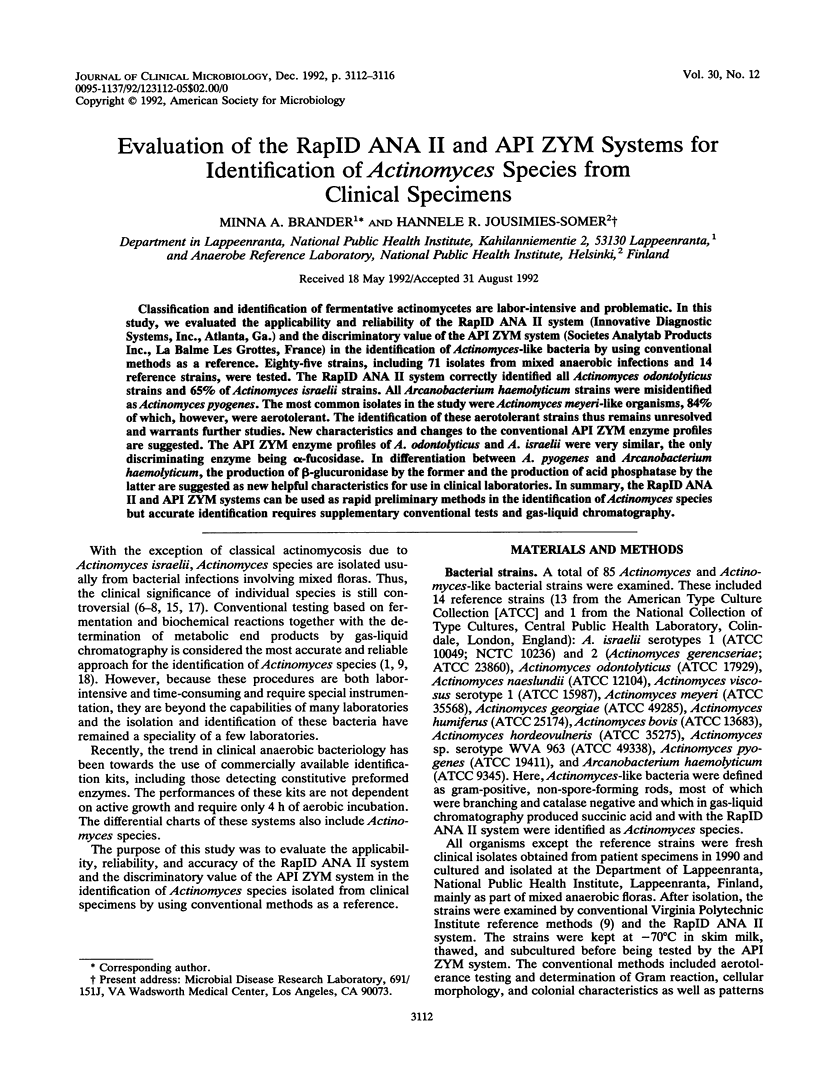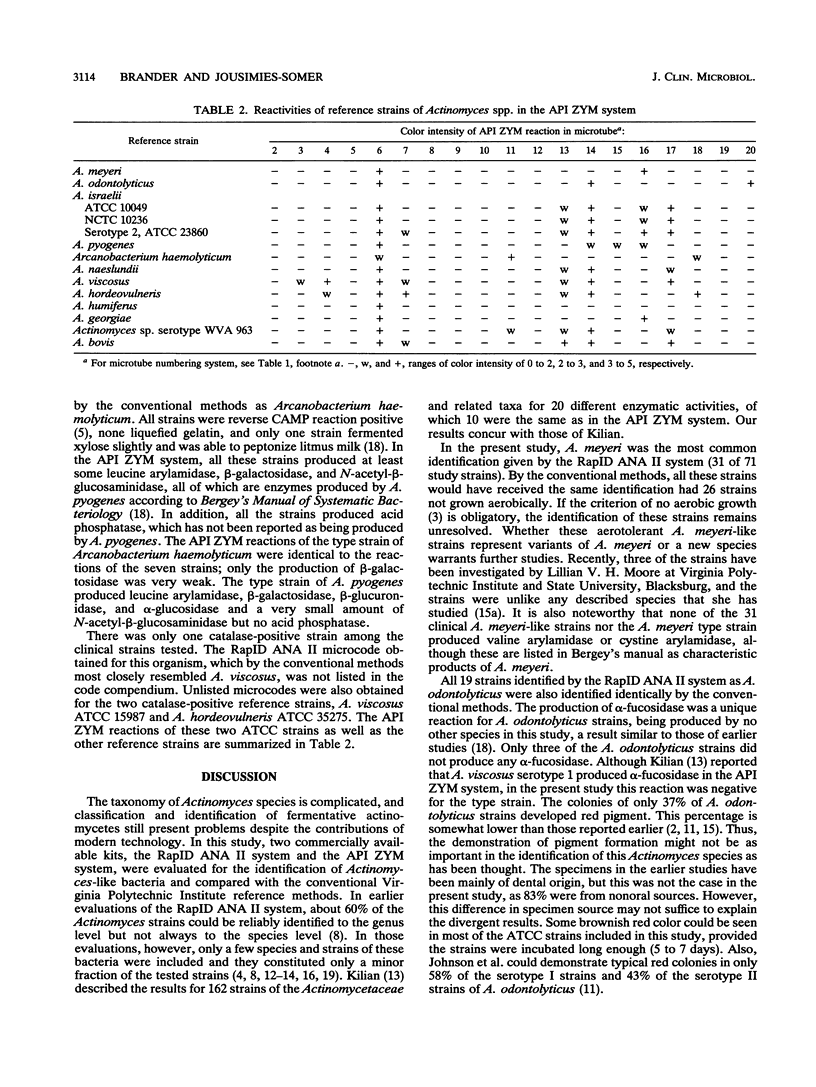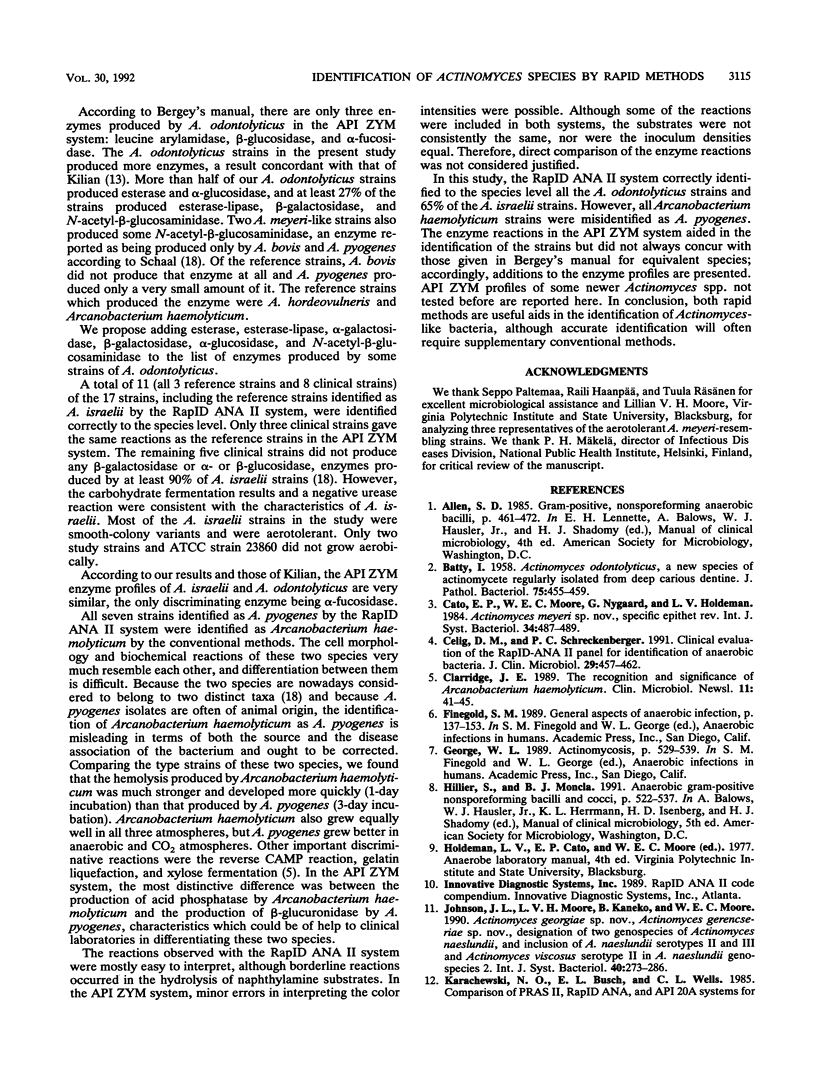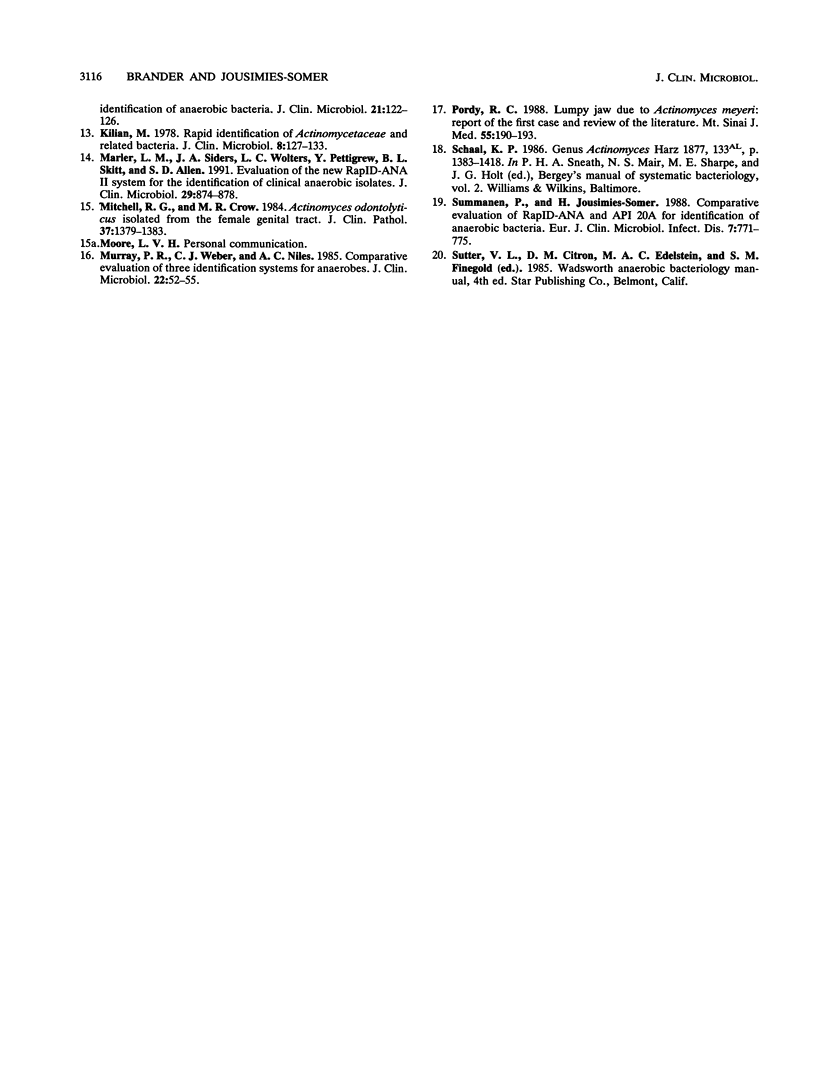Abstract
Classification and identification of fermentative actinomycetes are labor-intensive and problematic. In this study, we evaluated the applicability and reliability of the RapID ANA II system (Innovative Diagnostic Systems, Inc., Atlanta, Ga.) and the discriminatory value of the API ZYM system (Societes Analytab Products Inc., La Balme Les Grottes, France) in the identification of Actinomyces-like bacteria by using conventional methods as a reference. Eighty-five strains, including 71 isolates from mixed anaerobic infections and 14 reference strains, were tested. The RapID ANA II system correctly identified all Actinomyces odontolyticus strains and 65% of Actinomyces israelii strains. All Arcanobacterium haemolyticum strains were misidentified as Actinomyces pyogenes. The most common isolates in the study were Actinomyces meyeri-like organisms, 84% of which, however, were aerotolerant. The identification of these aerotolerant strains thus remains unresolved and warrants further studies. New characteristics and changes to the conventional API ZYM enzyme profiles are suggested. The API ZYM enzyme profiles of A. odontolyticus and A. israelii were very similar, the only discriminating enzyme being alpha-fucosidase. In differentiation between A. pyogenes and Arcanobacterium haemolyticum, the production of beta-glucuronidase by the former and the production of acid phosphatase by the latter are suggested as new helpful characteristics for use in clinical laboratories. In summary, the RapID ANA II and API ZYM systems can be used as rapid preliminary methods in the identification of Actinomyces species but accurate identification requires supplementary conventional tests and gas-liquid chromatography.
Full text
PDF




Selected References
These references are in PubMed. This may not be the complete list of references from this article.
- BATTY I. Actinomyces odontolyticus, a new species of actinomycete regularly isolated from deep carious dentine. J Pathol Bacteriol. 1958 Apr;75(2):455–459. doi: 10.1002/path.1700750225. [DOI] [PubMed] [Google Scholar]
- Celig D. M., Schreckenberger P. C. Clinical evaluation of the RapID-ANA II panel for identification of anaerobic bacteria. J Clin Microbiol. 1991 Mar;29(3):457–462. doi: 10.1128/jcm.29.3.457-462.1991. [DOI] [PMC free article] [PubMed] [Google Scholar]
- Johnson J. L., Moore L. V., Kaneko B., Moore W. E. Actinomyces georgiae sp. nov., Actinomyces gerencseriae sp. nov., designation of two genospecies of Actinomyces naeslundii, and inclusion of A. naeslundii serotypes II and III and Actinomyces viscosus serotype II in A. naeslundii genospecies 2. Int J Syst Bacteriol. 1990 Jul;40(3):273–286. doi: 10.1099/00207713-40-3-273. [DOI] [PubMed] [Google Scholar]
- Kilian M. Rapid identification of Actinomycetaceae and related bacteria. J Clin Microbiol. 1978 Aug;8(2):127–133. doi: 10.1128/jcm.8.2.127-133.1978. [DOI] [PMC free article] [PubMed] [Google Scholar]
- Marler L. M., Siders J. A., Wolters L. C., Pettigrew Y., Skitt B. L., Allen S. D. Evaluation of the new RapID-ANA II system for the identification of clinical anaerobic isolates. J Clin Microbiol. 1991 May;29(5):874–878. doi: 10.1128/jcm.29.5.874-878.1991. [DOI] [PMC free article] [PubMed] [Google Scholar]
- Mitchell R. G., Crow M. R. Actinomyces odontolyticus isolated from the female genital tract. J Clin Pathol. 1984 Dec;37(12):1379–1383. doi: 10.1136/jcp.37.12.1379. [DOI] [PMC free article] [PubMed] [Google Scholar]
- Murray P. R., Weber C. J., Niles A. C. Comparative evaluation of three identification systems for anaerobes. J Clin Microbiol. 1985 Jul;22(1):52–55. doi: 10.1128/jcm.22.1.52-55.1985. [DOI] [PMC free article] [PubMed] [Google Scholar]
- Pordy R. C. Lumpy jaw due to Actinomyces meyerii: report of the first case and review of the literature. Mt Sinai J Med. 1988 Mar;55(2):190–193. [PubMed] [Google Scholar]
- Summanen P., Jousimies-Somer H. Comparative evaluation of RapID ANA and API 20 A for identification of anaerobic bacteria. Eur J Clin Microbiol Infect Dis. 1988 Dec;7(6):771–775. doi: 10.1007/BF01975045. [DOI] [PubMed] [Google Scholar]


